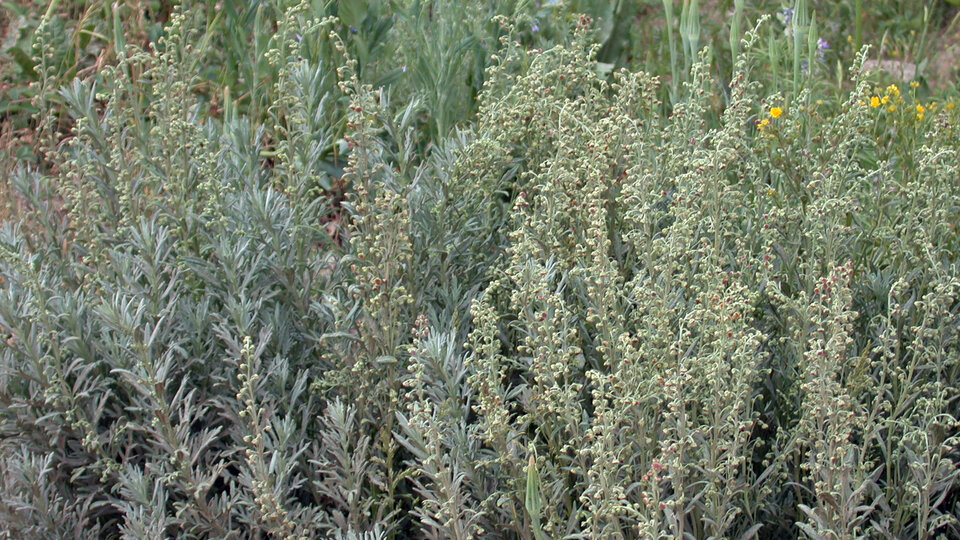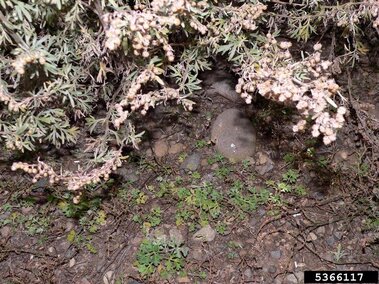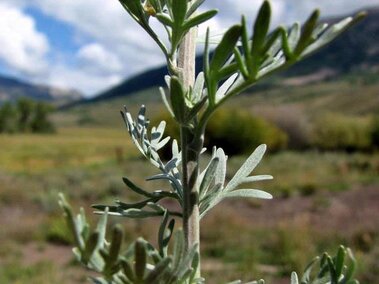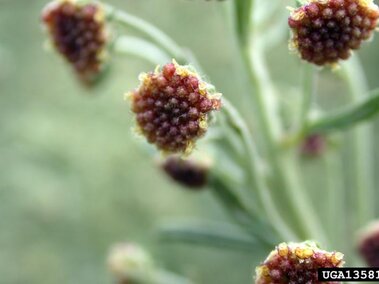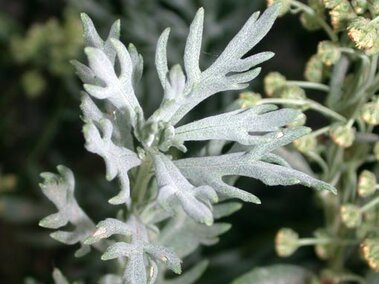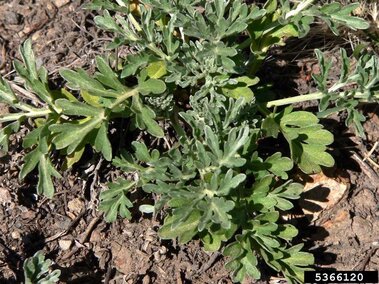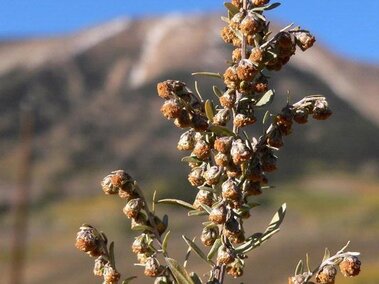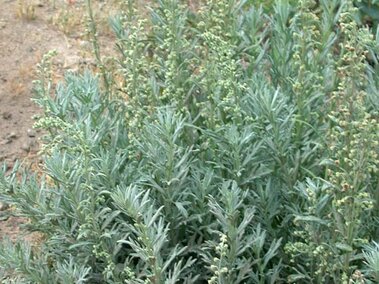General Information
Species Name: Artemisia absinthium
Also Known As: absinth, absinth sage, absinth sagewort, absinthe wormwood, American wormwood, common wormwood, green ginger, mugwort, sagewort, wormwood sage
Family: Asteraceae (Sunflower)
Growth Form: Forb
Life Span: Perennial
Flowering Dates: June-September
Origin: Europe
Toxic: Yes, to humans and horses. Contains the essential oil thujone, a chemical used to make the liquor absinthe, that causes epilepsy-like symptoms when ingested in large doses. Cows can consume it, but it will taint their milk.
Noxious: No
Watchlist: Yes. Please report to the local weed control authority if found in the following counties: Arthur, Banner, Blaine, Box Butte, Brown, Boyd, Cherry, Cheyenne, Custer, Dawes, Deuel, Garden, Garfield, Grant, Holt, Hooker, Keya Paha, Kimball, Logan, Loup, McPherson, Morrill, Rock, Scotts Bluff, Sheridan, Sioux, Thomas, and/or Wheeler.
Why Is It Invasive?
Absinth wormwood will outcompete desirable forbs and grasses in pastures, fields, and native grasslands. It easily establishes in disturbed areas where there is little plant competition. It provides limited forage to livestock, pronghorn, and deer.
What Does It Look Like?
General Characteristics
Absinth wormwood grows between a half-foot to around 3 feet tall usually, but can grow up to 5 feet tall. It is covered with fine, short, silky white hairs and the plant appears gray-green.
Flowers
Very small (1-2 mm long), tubular, pale yellow, and develop in drooping heads off of short stalks between the leaf and the plant's stem.
Leaves
2 to 5 inches long, divided two or three times into deeply lobed leaflets alternating and reducing in size as they go higher up the stem. Both surfaces are silvery, appearing more green towards the top of the plant. They have a strong sage-like scent when crushed.
Stems
Clustered, erect and branching from a woody base, appears grayish-green.
Seeds
Smooth, hairless, appears like a cylinder with a narrow base and rounded tip.
Photos
Where Does It Grow?
In both dry and moist soils in disturbed areas, waste places, roadsides, fields, sandbars, river banks, pastures, cropland, farmsteads, shelterbelts, and fence rows.
How Does It Spread?
Primarily through seed production, but it can also spread through short roots. It is a prolific seed producer; each stem can produce up to 50,000 seeds. Seeds are easily scattered and dispersed by wind, water, and animals. It most likely entered Nebraska from seed-infested hay imported from out-of-state.
How Do I Control It?
Mechanical
Please contact your county weed control authority to determine appropriate removal methods.
Cultural
When buying hay or forage, check to make sure it is weed-free certified. Management should include proper grazing and rotational grazing techniques that would maintain rangelands and prevent invasion. Disturbed areas should be re-seeded with desirable species to prevent spread.
Herbicide
Please refer to the 2025 Guide for Weed, Disease and Insect Management in Nebraska and/or contact your county weed control authority.
References and More Information
Center for Invasive Species and Ecosystem Health
Kindscher, K. (1992). Medicinal wild plants of the prairie: An ethnobotanical guide. University Press of Kansas.
Nebraska Weed Control Association
Stubbendieck, J., Coffin, M., & Dunn, C. (2019). Weeds of the Great Plains. Nebraska Department of Agriculture.
